
Ivy: the most beautiful variegated leaf varieties
Our favourite varieties to brighten up the garden!
Contents
For various misconceptions, ivy is often overlooked and criticised. However, variegated ivies have a rightful place in the garden, on a terrace, or a balcony, and offer beautiful decorative advantages. They have the benefit of evergreen foliage, which allows for easy dressing of a worn wall, covering of ground, or adding a touch of light to a shady corner all year round. Their leaves, variegated with white or yellow, are more or less lobed, small or large depending on the varieties. Comfortable in all soils, even poor ones, and requiring little maintenance, these hardy climbing plants can cling to their support by means of their powerful climbing roots. Moreover, although the flowering of ivies is not particularly attractive to us, it is appealing to many pollinating insects that feed on it. Fruit in clusters of black berries, toxic to humans, is also very beneficial for birds during winter. Discover our selection of variegated ivies of modest or large size, to be planted in partial shade, in the ground, or in a large pot!
⇒ Discover our guide to learn all about Climbing Ivy, Hedera helix: planting, growing, pruning
⇒ More information regarding 5 misconceptions about ivy
Hedera helix 'Glacier'
Hedera helix ‘Glacier’ stands out with its small variegated foliage, grey-green and silver. This variety develops small trilobed leaves measuring 4 cm in length, with a very fine and delicate variegation. This gives a beautiful elegance to this common ivy. In autumn, bees enjoy its nectar, and in winter, its berries provide a good source of food for birds that relish them. Hardy, this common ivy grows quickly to reach a height of 3 m and a spread of about 2 m. Plant the ‘Glacier’ ivy in a semi-shaded position, in humus-bearing soil, and near a support to which it will easily attach itself thanks to its climbing roots. This climbing plant is excellent for concealing an unsightly wall. Note that this variety can also be grown in a large pot.
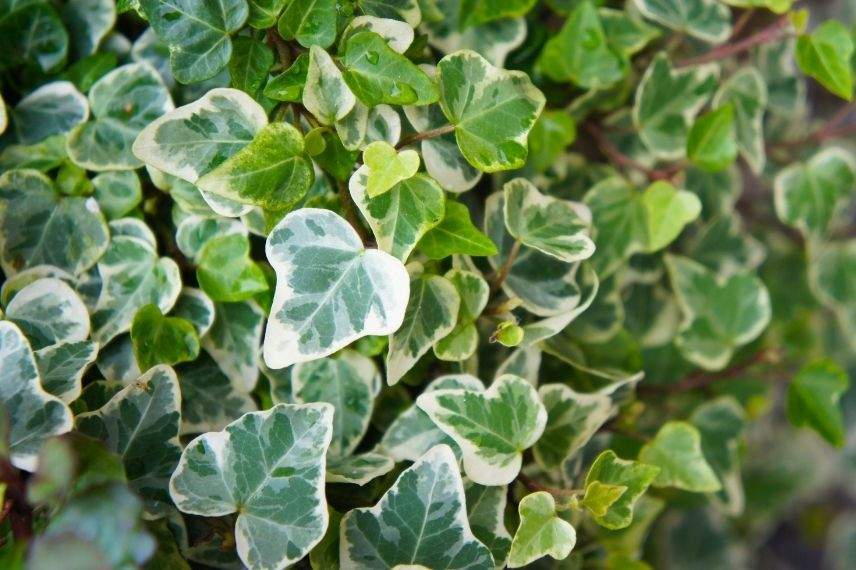
Hedera helix ‘Glacier’
Hedera helix 'Goldchild'
The variegated ivy Hedera helix ‘Goldchild’ is characterised by its small size, compact habit, and stunning colours. This common ivy is adorned with three-lobed leaves in grey-green shades that vary in darkness and are edged with a bright yellow that will turn to cream over time. At maturity, it reaches no more than 1.5 m in height and 1 m in width, making it ideal for small spaces, where it decorates all year round with its evergreen leaves. Planted in the ground or in a pot, it brings brightness to small gardens, terraces, or balconies exposed to partial shade or full shade. Note that you can use it both as a small groundcover and as a climbing plant trained on a structure.
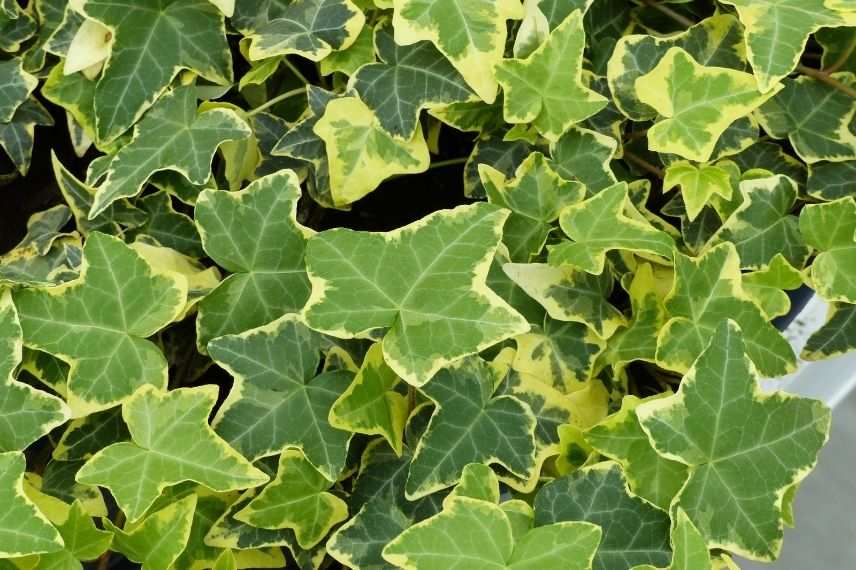
Hedera helix ‘Goldchild’
Discover other Hedera - Ivy
View all →Available in 1 sizes
Available in 3 sizes
Available in 1 sizes
Available in 1 sizes
Available in 2 sizes
Available in 1 sizes
Available in 1 sizes
Available in 2 sizes
Available in 1 sizes
Available in 1 sizes
Hedera helix 'Goldheart'
Also variegated with yellow, the Hedera helix ‘Goldheart’ is, however, very different from the common ivy ‘Goldchild’. Firstly, for the ‘Goldheart’ variety, it is the heart of the leaves that is tinted yellow, not their edge, hence its name meaning “golden heart” in French. Moreover, the green colour of the leaves is much darker, which accentuates the contrast between the green and the yellow. Additionally, its leaves are also longer, measuring 8 cm for ‘Goldheart’ compared to 4 cm for ‘Goldchild’. Finally, the Hedera helix ‘Goldheart’ is of considerable size. Indeed, it can reach 8 m in height and 4 m in width. In open ground, the common ivy ‘Goldheart’ should ideally be planted in a bright, non-scorching location, but also sheltered from the wind. It thrives there and displays its most beautiful attire.
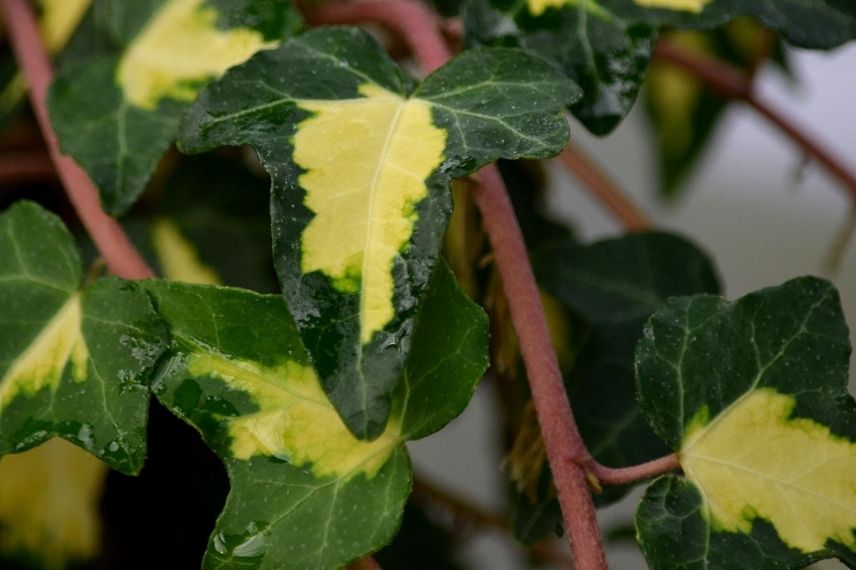
Hedera helix ‘Goldheart’
Read also
How to grow ivy in a pot?Hedera helix 'Marginata Elegantissima'
In a very refined style, the Hedera helix ‘Marginata Elegantissima’ boasts magnificent variegated foliage of white. This common ivy is adorned with small triangular leaves in grey-green, heavily splashed with cream white. These leaves are characterised by having between 3 and 5 lobes and are edged with a fine pink margin. Furthermore, during the winter period, the cold brings out rosy hues, enhancing the beauty of the ‘Marginata Elegantissima’ ivy. With excellent hardiness, this highly ornamental variety is of medium size, reaching 2.50 m in height and 1.50 m in width at maturity. To maintain beautifully contrasting foliage, it is best to plant this ivy in partial shade, sheltered from overly harsh sunlight.
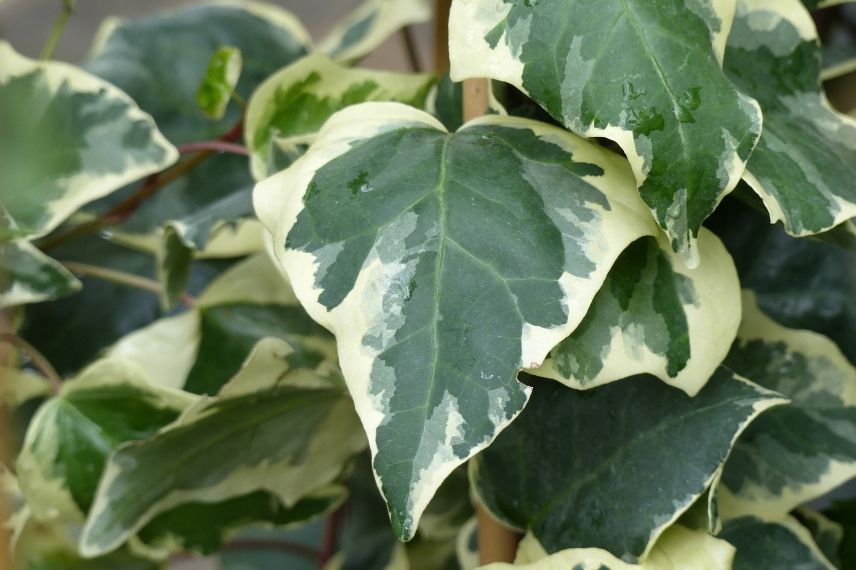
Hedera helix ‘Marginata Elegantissima’
Hedera colchica ‘Sulphur Heart’
Hedera colchica ‘Sulphur Heart’ features irregularly variegated light green foliage with golden yellow at the centre of its leaves. These are particularly large and wide, measuring 15 to 20 cm long! In winter, they eventually curl in on themselves due to the cold. Also, be aware that the variegation of this variety intensifies over time. Colchican Ivy is a species that requires time to develop. Its growth is much slower than that of its cousin, common ivy. Therefore, a bit of patience is needed before it can climb a wall or cover the ground. Hardy to negative temperatures down to -15°C, vigorous and robust, Colchican Ivy ‘Sulphur Heart’ has received an Award of Garden Merit from the Royal Horticultural Society. It is also known by the variety name ‘Paddy’s Pride’.
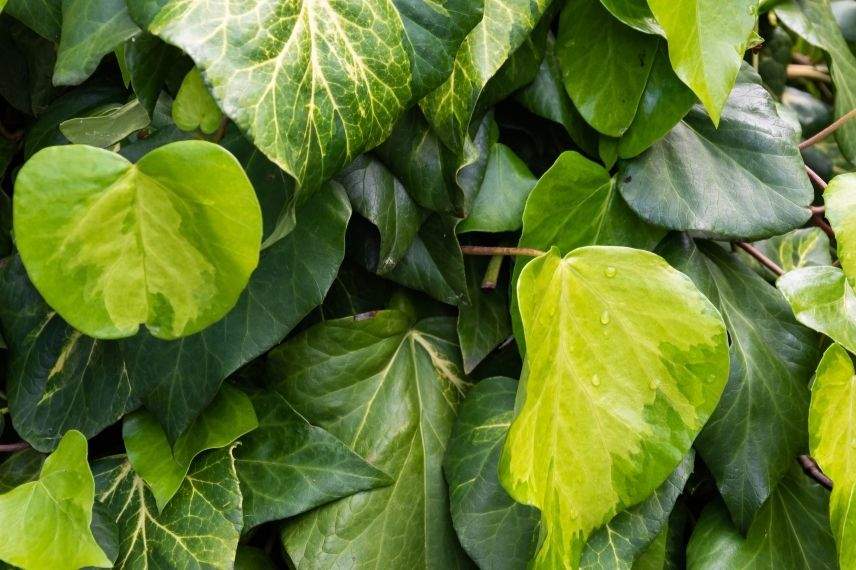
Hedera colchica ‘Sulphur Heart’
Hedera algeriensis 'Gloire de Marengo'
The Hedera algeriensis ‘Gloire de Marengo’ is notable for producing swollen leaves inserted on red petioles. Just like Hedera colchica ‘Sulphur Heart’, it bears leaves with slightly pronounced lobes, shaped like a large triangle (approximately 10 cm). In contrast, its foliage is variegated with grey-green, silver, white, and cream. A stunning mix of colours! In winter, it takes on a pink hue due to the cold. Also known as Canary Ivy or Algerian Ivy ‘Gloire de Marengo’ because of its mountainous origins in the Canary Islands and northern Africa, it can climb up to a height of 6 m and spread just as much. Being slightly more sensitive to cold than other ivies, it is best to plant it in a large container with an integrated support if you live north of the Loire, so that it can be sheltered from frost.
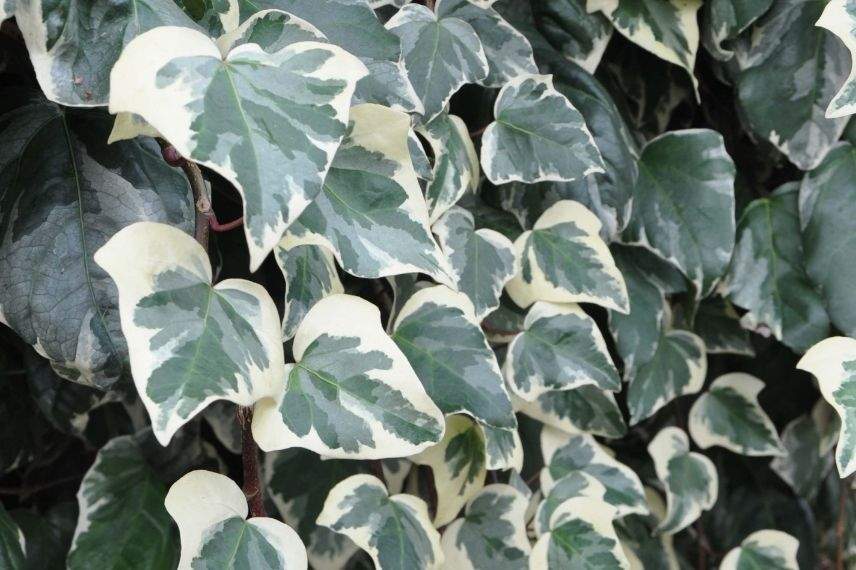
Hedera algeriensis ‘Gloire de Marengo’
- Subscribe!
- Contents
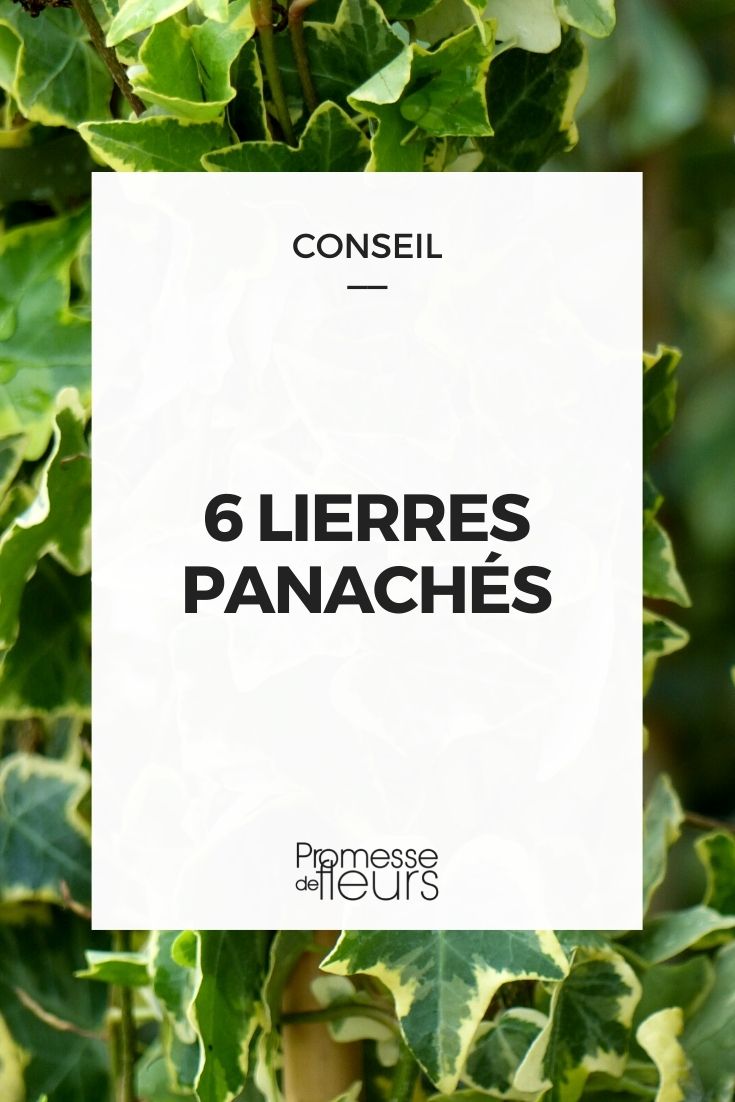































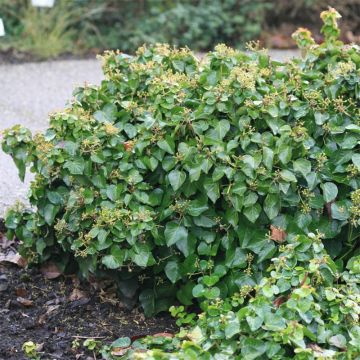
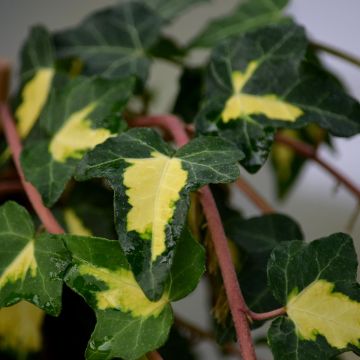
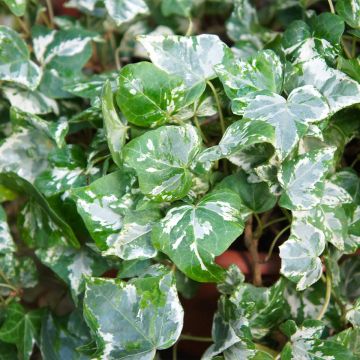
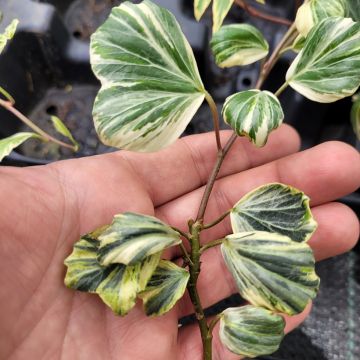
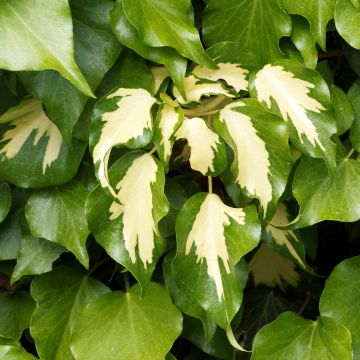
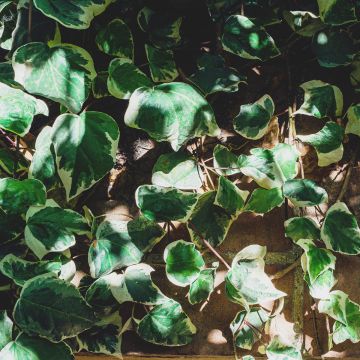
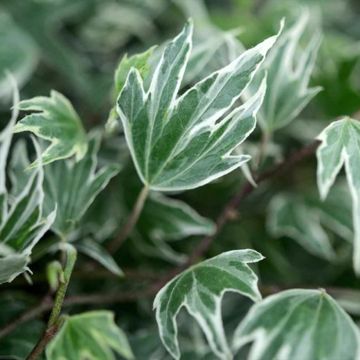


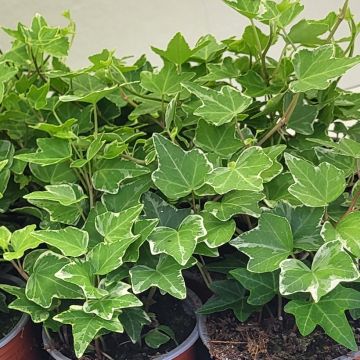
Comments